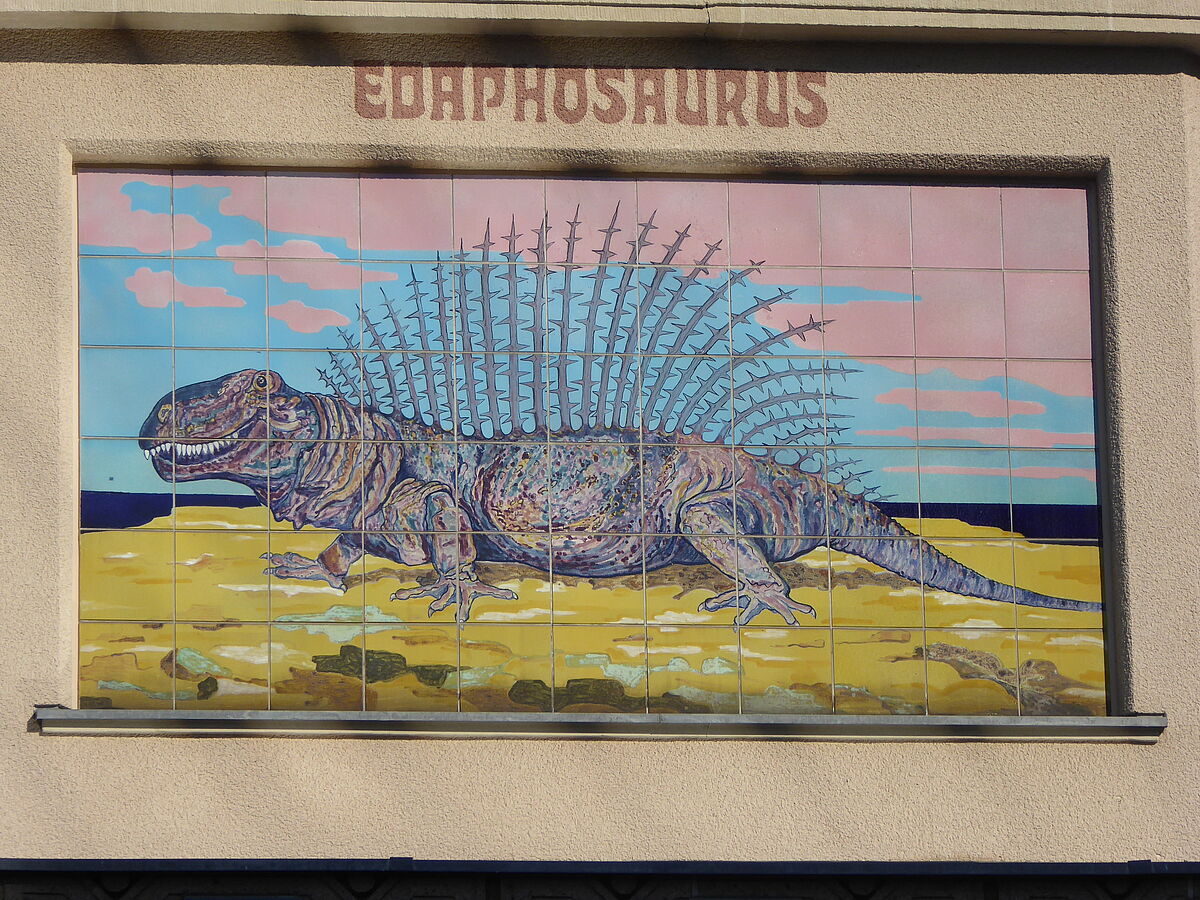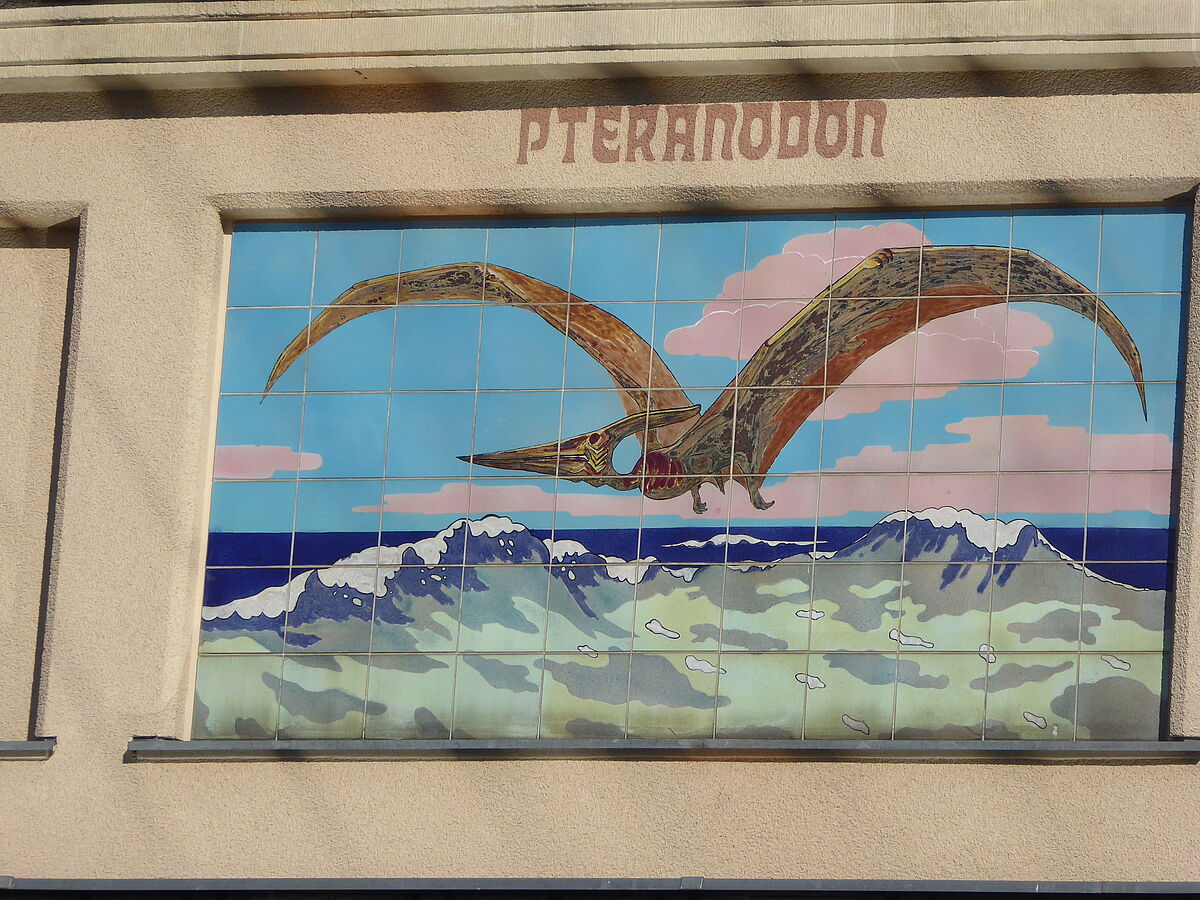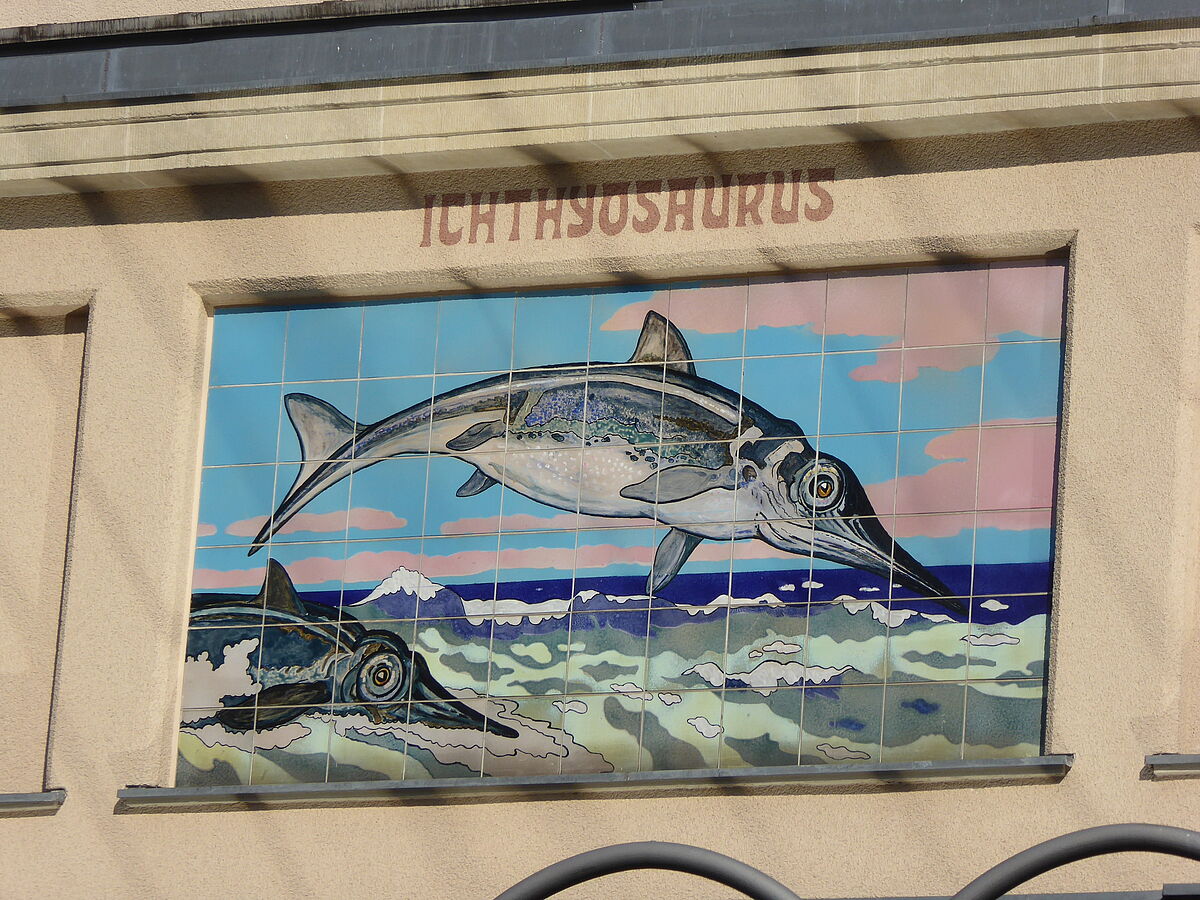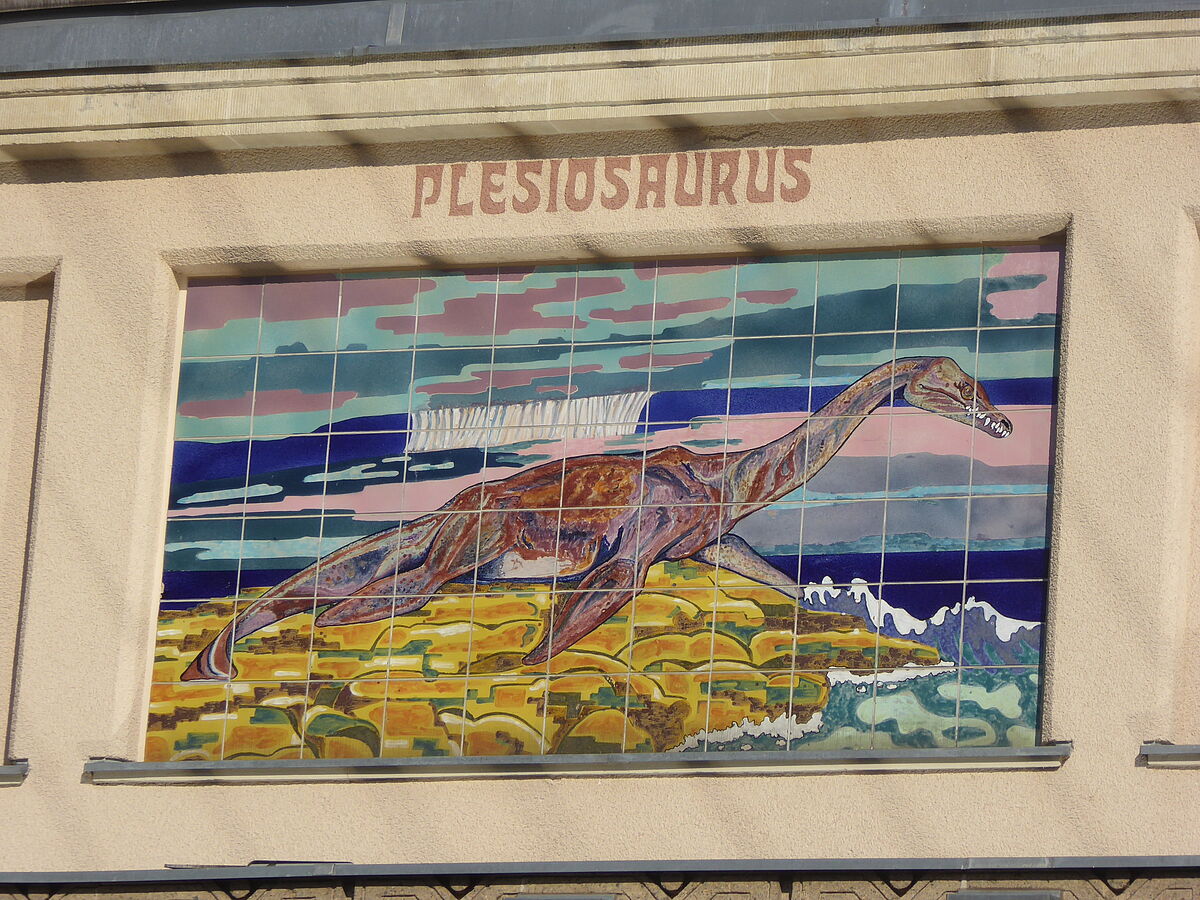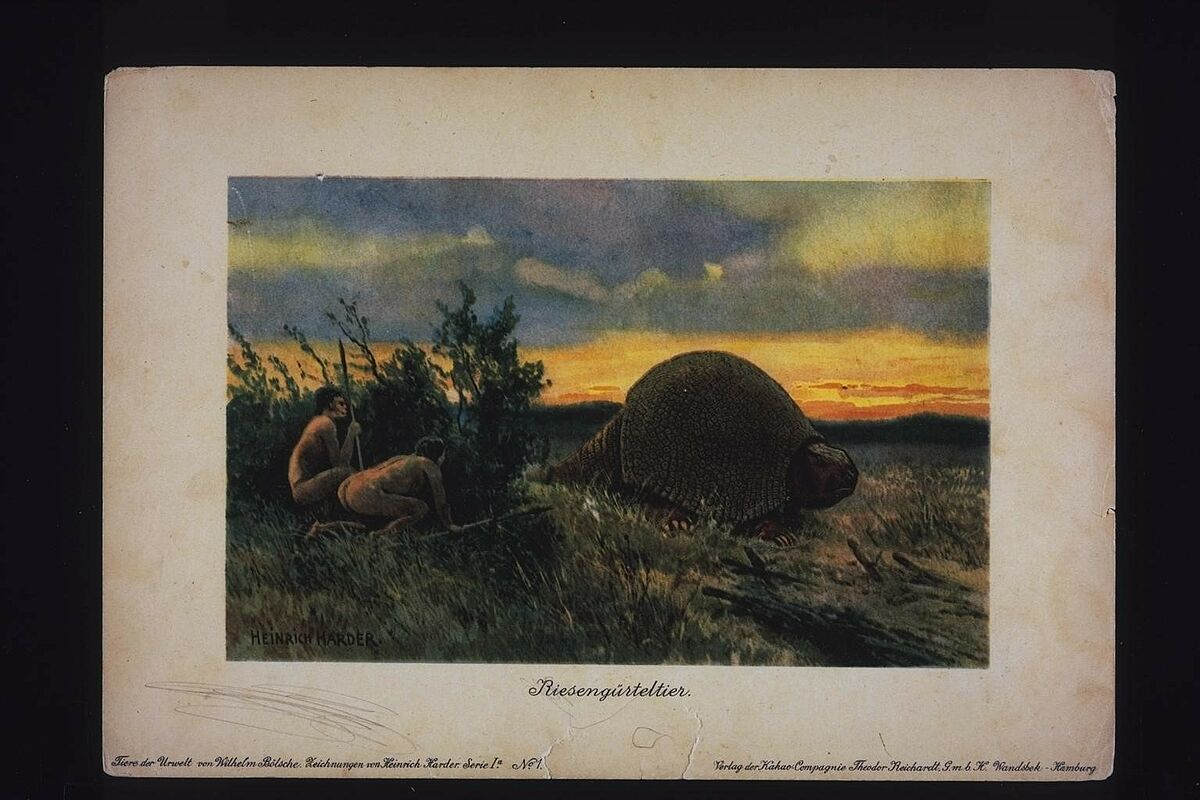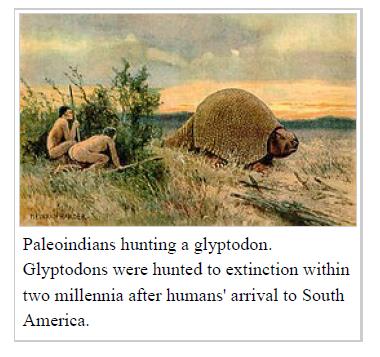'Tiere der Urwelt': Heinrich Harder’s Illustrations, Wikipedia and the “Pleistocene Overkill”
by Alexander Bräuer, 04/04/2016.
Summary
Heinrich Harder, a painter from Lower Pomerania, Germany, created at the beginning of the 20th century several illustrations for a series of trading cards named Tiere der Urwelt (“animals of the prehistoric world”). Although the trading cards first promoted a Darwinist worldview on ‘prehistoric’ animals, Harder’s illustrations became very elusive artifacts. They were reloaded with new meanings after the late 1960s: the “Pleistocene Overkill” hypothesis took over and reused the paintings as illustrations for alleged mass killings of the Pleistocene megafauna by humans, i.e. indigenous people. But why did/do the paintings by Heinrich Harder provide such a compelling way of presenting the “Pleistocene Overkill” thesis in a popular discourse? This article will address this question by taking a closer look at the use of Harder’s paintings in Wikipedia articles.
When the painter Heinrich Harder died on the 5th February 1935 in Berlin, he could look back at an eventful life. Starting his career with paintings of landscapes, he went on to become one of the most influential painters of ‘prehistoric’ animals. Born in June 1858 in Putzar, Lower Pomerania, Harder started a career in landscape painting, before he published illustrations depicting ‘prehistoric’ times in the popular German newspaper Die Gartenlaube and children books. Furthermore, he created – together with Wilhelm Bölsche who accompanied the illustrations with short informative texts – 60 illustrations for two series of trading cards called Tiere der Urwelt (“animals of the prehistoric world”) for the Theodor Reichardt cacao company. The popular series featured ‘prehistoric’ animals in their natural surroundings. In 1913, he was responsible for the creation of some sculptures of prominent primeval animals which were integrated into the façade of the new aquarium in the Berliner Zoo.
This article will trace the history of some paintings of Tiere der Urwelt in order to find out why they remained so popular and widely used for the illustration of an American antiquity. Until today, Wikipedia is using Harder’s illustrations in several articles on diverse topics. The depiction of the Glyptodon (see Figure 5 & 6), for example, is used to illustrate, among others, entries on “Paleo Indians”, the “Great American Interchange”, the “Paleolithic”, the “Indigenous people of the Americas”, and the “Mesa Verde National Parks.”[1]
Origins of Tiere der Urwelt
As outlined in an article on the contemporary significance of Tiere der Urwelt (link to article), the paintings of Heinrich Harder – together with the descriptions by Wilhelm Bölsche – should be understood as a promotion of their interpretation of Darwin’s theory of evolution and so wittingly or unwittingly participated in a discourse that justified settler colonialism and the genocide on the indigenous population. However, trading cards and especially Harder’s illustrations circulated widely and continued to be used even after the idea of the vanishing Native American race had become obsolete. Trading cards are artifacts which could be loaded with new meanings depending on time, space and socio-cultural contexts. Therefore, it is not surprising that the imagery of the trading cards was used again in a different context, starting in the 1960s. The trading cards themselves became less important as their circulation ceased and only limited exemplars were traded by a small group of collectors and enthusiasts. After the early 20th century, new forms of media appeared and became dominant for the discourses of an American antiquity in the German public. Looking at the trading cards as an artifact, another important development can be observed. The imagery of Heinrich Harder was separated from the text of Wilhelm Bölsche. This separation became necessary because Bölsche’s texts were explicitly rooted in a specific view of Darwin’s theory that became obsolete in the following decades. The idea of the Native Americans as a vanishing race stood in stark contrast to the recovering of the Native American populations in the first half of the 20th century. However, the imagery of Harder, although clearly created under the same influences, survived. The following paragraphs will address the questions why and how the imagery could be filled with new meanings whereas the texts were forgotten or ignored.
For my argument I will concentrate on one painting by Heinrich Harder: The Glyptodon, taken from trading card No. 1. As a painting by Harder containing indigenous people, it could be incorporated much more easily in articles and arguments outside the direct realm of the animal itself.
The Glyptodon depicts two naked human hunters armed with spears hiding from a passing Glyptodon behind shrubs on a plain. The humans are obviously close to launching their attack on the unaware animal. The landscape resembles the Great plains in North America and consists of flat grassland with some hills or mountains in the background. The paintingdisplayed the contemporaneity of human settlement and the existence of primeval animals – a controversial point at the beginning of the 20th century.
Paintings as a Medium for the Representation of Primeval Times
Today, the contemporaneity of humans and certain species of the Glyptodon family represents a scientific consensus. Before we take a look at the utilization of Harder’s paintings in detail, some basic conditions for the visual culture around the topic of American antiquity have to be addressed. Generally, the popular visual representation of the American distant past is signified by a dearth of contemporary material. Visual material from primeval humans such as cave paintings are rarely used, because they seem alien to modern visual cultures and contemporary paintings or photographs do not exist for obvious reasons. Instead, the popular visual representations of the American distant past rely on a mix of materials: photographs of artifacts; photographs showing similarities (for example of animals or plants still existing today); scientific representations like maps or charts; and paintings. The Wikipedia article on the “Paleolithic”, for example, contains three paintings, six pictures of artifacts and three photographs that work with similarities showing an animal, a plant, and a frozen surface in order to explain the natural conditions.[2] In this ensemble, the paintings are crucial for a lively depiction of the epoch. In contrast to the other visual material, they are able to convey a vivid and active representation of humans and animals. Thus, paintings play an important role for the emotional connection and identification of the reader with the epoch while the photographs of artifacts, on the other hand, provide the scientific evidence/groundwork for the article.
Furthermore, paintings hold two more advantages for the visual representation of primeval times. First, and from a practical point of view, most paintings are usually older and copyrights issues are not as much an issue as for more contemporary materials such as photographs. Secondly, paintings are usually older and, thus, imply a certain authority for the representation of historical events. Paintings of primeval times are profiting from an established tradition of representing historical events and times, like the French revolution, with mostly contemporary paintings. In this respect, the representation of primeval times in paintings is misleading because the painters did not have the chance to eyewitness the events. Because of the considerable time difference it is of particular importance to embed the paintings of primeval times into the historical discourses of their origin. However, for our argument it is also important to notice the value added by the representation of other historical times that privilege paintings of primeval times over more contemporary forms of representation such as animations.
Pleistocene Overkill and the Utilization of Harder’s paintings on Wikipedia
Heinrich Harder’s paintings are used in at least three different ways on Wikipedia which will be exemplified with the painting Glyptodon. First, Glyptodon is prominently featured in the article on “Paleo-Indians” as the only image illustrating the summary at the beginning of the text. The same is true for the article on the “Paleolithic” and other articles (“History of South America”; “Indigenous peoples of the Americas”; “History of Andean South America”) use the painting as a rather general depiction of primeval times. The second context relates the painting to specific places (“Mesa Verde National Park”; “Syracuse Lake”), persons (“Heinrich Harder”) or animals (“Glyptodon”). Third, Glyptodon is used to illustrate content related to the late Pleistocene extinction of large fractions of the megafauna. In the article “Great American Interchange”, for example, the painting accompanies a subsection with the title “Late Pleistocene extinctions”. In this context a certain explanation is favored: the extinction via human hunting as shown on the painting (“human activities were pivotal”[3]). Already in “Paleolithic” which uses the painting as a general depiction, the caption reads “Paleoindians hunting a glyptodon. Glyptodons were hunted to extinction within two millennia after humans' arrival to South America.”[4]
However, this specific explanation for the so-called Pleistocene Overkill is much debated in the scientific world and other explanations for the extinctions do exist. The scientific debate has a strong moral undertone, colonial implications, and is running under headlines like “(un)ecological Indians”, “blitzkrieg” and “mass killings.”[5] In the late 1960s, Paul Martin, an archaeologist from Arizona, reestablished the hypothesis of a Pleistocene overkill by humans (indigenous people) that already had a long history since the 1860s in archaeology.[6] It is no accident that the hypothesis became popular in the following two decades which were coined by strong environmental feelings and the idea of humans destroying nature. Under these circumstances the paintings of Harder came in handy in order to demonstrate and underline the hypothesis that ecological destruction was not a modern capitalist trait but had already been conducted by allegedly ‘noble’ Indians. Like the debate, the use of Harder’s paintings for the support of a Pleistocene Overkill is not limited to the Anglophone world. In the German Wikipedia article on the Pleistocene Overkill (“Quartäre Aussterbewelle”) Glyptodon illustrates – together with another hunting painting staged in New Zealand – the section on possible human causes (“Der Mensch als Verursacher”).[7]
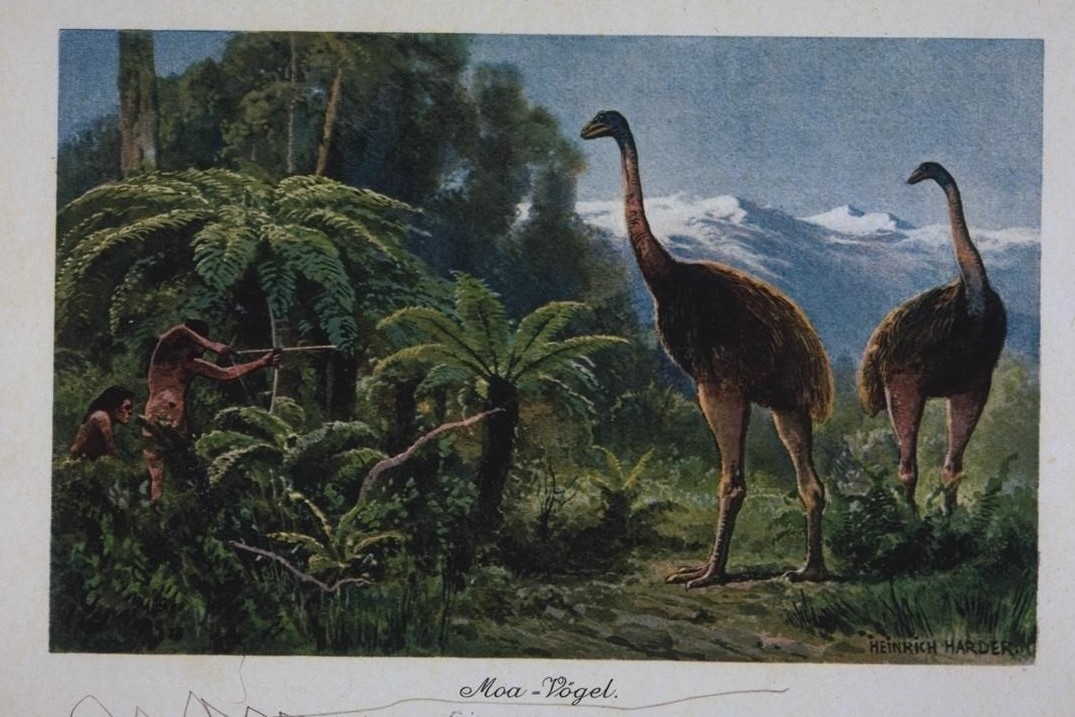
Because of the leading role of the English version of Wikipedia,[8] many arguments and especially pictures got transferred in versions with other languages. The descriptions by Wilhelm Bölsche which were prominently featured on the original trading cards are not mentioned and disappear behind the illustrations of Harder. This is hardly surprising, because Bölsche’s texts would highlight the origin of the trading cards in early 20th century colonial discourses about the genocide on indigenous races, a point of view which would today discredit the trading cards (and illustrations) immediately.
Today, Heinrich Harder’s paintings provide a much used foundation for the illustration of the Pleistocene Overkill. However, it is important to notice that they were produced in different historical circumstances and traveled in time and space before being connected to the Pleistocene Overkill thesis of the late 1960s. Coming from a Darwinist, German early 20th century background, the paintings are now used on a global scale to add plausibility to a theory which tries to proove that indigenous people exterminated the Pleistocene megafauna. As such, the paintings actually never left their colonial origins. Rather, as colonialism changed over time, the paintings were utilized in different ways to support theories shaped and influenced by colonial ideas.
NOTES
[1] https://commons.wikimedia.org/wiki/File:Glyptodon_old_drawing.jpg; accessed 03/30/2016. If not marked otherwise, all the following Wikipedia articles are taken from the English site.
[2] https://en.wikipedia.org/wiki/Paleolithic; accessed 03/30/2016.
[3] https://en.wikipedia.org/wiki/Great_American_Interchange; accessed: 04/01/2016.
[4] https://en.wikipedia.org/wiki/Paleolithic; accessed: 04/01/2016.
[5] Russell, Nerissa. Social Zooarchaeology: Humans and Animals in Prehistory. Cambridge: Cambridge UP, 2012, p. 205.
[6] Grayson, Donald K. „Vicissitudes and Overkill: The Development of Explanations of Pleistocene Extinctions“. In: Michael B. Schiffer (Ed.). Advances in Archaeological Method and Theory: Volume 3. New York: Academic Press, 1980, p. 357-404, p. 381.
[7] https://en.wikipedia.org/wiki/Quaternary_extinction_event; accessed: 03/19/2016.
[8] The English version of Wikipedia contains roughly twice as much articles as the Swedish one on the second place. Source: en.wikipedia.org/wiki/List_of_Wikipedias; accessed: 04/01/2016.
ILLUSTRATIONS
Figure 1-4: Bräuer, Alexander. "Painting by Heinrich Harder, Aquarium Berlin". 09/2016. JPEG. © Alexander Bräuer.
Figure 5: Original illustration by Heinrich Harder “Riesengürterltier” (Glyptodon), ca. 1900. Source: Tiere der Urwelt: Rekonstruktionen nach verschiedenen wissenschaftlichen Vorlagen. Wandsbek-Hamburg: Verl. der Kakao Compagnie Theodor Reichhardt, ca. 1900. diglib.bis.uni-oldenburg.de/retrodig/buch.php; accessed 03/27/2016.
Figure 6: Heinrich Harder’s painting Glyptodon with a caption connecting it to the Pleistocene Overkill hypothesis. Source: https://en.wikipedia.org/wiki/Paleolithic; accessed 04/01/2016.
Figure 7: Original llustration by Heinrich Harder “Moa-Vögel“ (giant Moa, Dinornis). Source: Tiere der Urwelt: Rekonstruktionen nach verschiedenen wissenschaftlichen Vorlagen. Wandsbek-Hamburg: Verl. der Kakao Compagnie Theodor Reichhardt, ca. 1900. diglib.bis.uni-oldenburg.de/retrodig/buch.php; accessed 03/27/2016.

